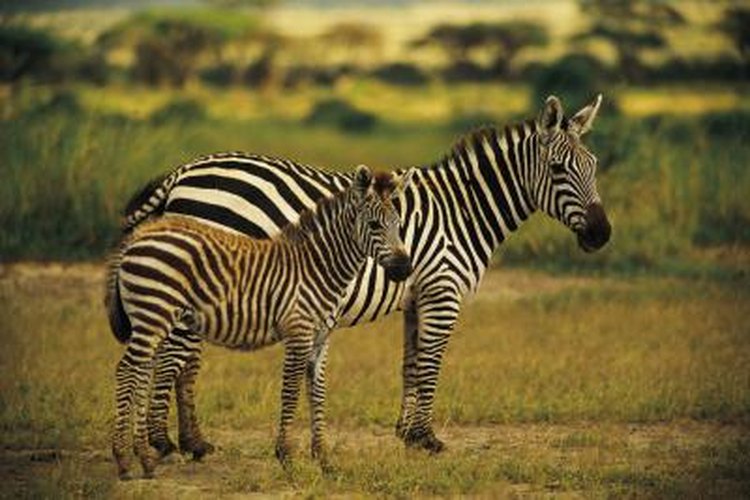
The Nurturing Embrace: How Zebras Provide Exceptional Care for Their Foals
In the vast and unforgiving African savanna, zebras, with their distinctive black and white stripes, navigate the challenges of survival with remarkable resilience. As social animals, they form strong bonds within their herds, and this camaraderie extends to the nurturing care they provide for their young. The arrival of a zebra foal is a momentous occasion, heralding a new chapter in the life of the herd.
The Birth of a Zebra Foal
Zebra mares typically give birth to a single foal after a gestation period of around 12 months. The birth process usually occurs during the night, providing some protection from predators. The foal emerges from the mare’s womb with a soft, brown coat that will gradually darken to the familiar black and white stripes as it matures.
Immediate Care and Bonding
Within minutes of birth, the foal attempts to stand on its wobbly legs. The mare stands protectively nearby, encouraging her newborn to take its first steps. The foal’s instinctual behavior drives it to nuzzle its mother’s udder, seeking nourishment. The mare’s milk is rich in nutrients and antibodies, providing essential sustenance for the foal’s growth and development.
The bond between a zebra mare and her foal is unbreakable. The mare will spend the next several months nursing and protecting her young, ensuring its survival in the harsh savanna environment.
The Role of the Herd
While the mare assumes the primary responsibility for caring for her foal, the entire herd plays a vital role in its upbringing. Other mares in the herd may assist in nursing the foal, providing additional nourishment and support. The herd’s collective vigilance helps protect the foal from predators, with members taking turns standing guard and alerting the group to potential threats.
Play and Socialization
As the foal grows stronger, it begins to explore its surroundings and interact with other foals in the herd. Playful interactions are essential for the foal’s physical and social development. They learn to run, jump, and navigate the savanna’s terrain, honing their survival skills.
Through play, foals also develop social bonds with their peers. They learn to communicate, establish dominance hierarchies, and cooperate within the herd. These social skills are crucial for their future success as adults.
Protection from Predators
Zebras are constantly on the lookout for predators, such as lions, leopards, and hyenas. When danger approaches, the herd forms a protective circle around the foals, using their powerful hooves and sharp teeth to deter attackers.
The distinctive black and white stripes of zebras serve as a form of camouflage, making it difficult for predators to single out individual foals. The herd’s collective vigilance and defensive strategies increase the foals’ chances of survival.
Weaning and Independence
Around six to eight months after birth, the foal begins to wean from its mother’s milk. It gradually transitions to grazing on grass and other vegetation, becoming more independent. The mare will continue to provide protection and guidance, but the foal gradually assumes more responsibility for its own well-being.
As the foal approaches adulthood, it will fully integrate into the herd, contributing to its survival and prosperity. The nurturing care it received during its early years has laid the foundation for its success in the challenging African savanna.
Conclusion
The care that zebras provide for their foals is a testament to the strong bonds that exist within their herds. From the moment of birth, the foal is surrounded by a network of support and protection. The mare’s unwavering devotion, the herd’s collective vigilance, and the foal’s own playful explorations and social interactions contribute to its development into a healthy and resilient adult.
The nurturing care provided by zebras is a reminder of the importance of family and community in ensuring the survival and well-being of all members. It is a testament to the power of cooperation, protection, and the unwavering bonds that unite these magnificent creatures.
